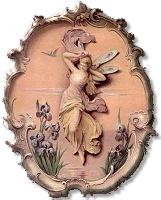 Class Structure
Class Structure Arthur J Munby (1829-1910) who worked for the Ecclesiastical Commission (& also taught Latin at the Working Women's College) revealed in his 69 volume diary that he cannot acknowledge Hannah Cullwick, a working class woman that he loves, in public. Hannah also had a 17 volume diary and her letters to Munby
Arthur J Munby (1829-1910) who worked for the Ecclesiastical Commission (& also taught Latin at the Working Women's College) revealed in his 69 volume diary that he cannot acknowledge Hannah Cullwick, a working class woman that he loves, in public. Hannah also had a 17 volume diary and her letters to MunbyWhat did he write in his diary?
“'I love her, then, because she is not like her own class after all, but like mine.”
After 18 years of courtship, they married in secret. They remained secretly married for 36 years. Munby knew Swinburne, Ruskin, Rossetti, Sala, Darwin, Thackeray, Dickens, Lord Salisbury, Herbert Henry Asquith (the future prime minister), the artist Ruskin, and more. The poet Browning praised his poems. He had to keep wife Hannah, a maid of all work, a secret. Even when in the privacy of their home, they went through all kinds of grief to keep their relationship secret from others. When others were present, Hannah would take her room in the basement. Munby told his wife to call him Arthur, but she only did so once because she felt so uncomfortable doing so.
20th March 1859 diary entry:
Breakfasted with Litchfield. Ormsby being there also. Talk chiefly of the comparative morality of this generation and the last, and of the advantage c r otherwise of repressing street vice: as to which on the whole I side against the puritans, & am in favour of the unmolested street walker - provided she be sober, well dressed, & not too importunate.'
paradoxically ... some women improved themselves by becoming
 prostitutes ... how? ... in order to be a “suitable companion” for a “gentleman” some learned how to read and took lessons ... Munby recorded one such situation in his diary ... Munby knew Sarah Tanner for about 4-5 years ... one day he met her and asked why she became a prostitute ... he recorded ...
prostitutes ... how? ... in order to be a “suitable companion” for a “gentleman” some learned how to read and took lessons ... Munby recorded one such situation in his diary ... Munby knew Sarah Tanner for about 4-5 years ... one day he met her and asked why she became a prostitute ... he recorded ...She had got tired of service, wanted to see life and become independent; & so she had become a prostitute, of her own accord & without being seduced. She saw no harm in it enjoyed it very much, thought it might raise her & perhaps be profitable
He met her much later and recorded this in his diary ...
She was stouter & healthier than ever, well dressed, not professionally as a lady, but quietly and well, like a respectable upper servant. (…)How is this? I said again. Well, I've left the streets & settled down,' she said quietly. Married?' l asked. Oh no! But I'd been on the streets three years, and saved up (…) and so I thought I'd leave, and I've taken a coffeehouse with my earnings - the Hampshire Coffeehouse over Waterloo Bridge. (..) Now here is a handsome young woman of twenty-six, who, having begun life as a servant of all work, and then spent three years in voluntary prostitution amongst men of a class much above her own, retires with a little competance, and invests the earnings of her infamous trade in a respectable coffeehouse, where she settles downin homely usefulness and virtuous comfort.'
Munby visited the coffee house 5 days later & found it “respectable” ... a local policeman agreed saying he didn’t think bad women were there at all
Lord Acton believed that most ex-prostitutes returned to respectable lives ... many owned their own businesses or made “good” marriages
Munby also recorded the life of Collier girls (collier=someone who works in a coal mine), female envelope makers, flither-lasses (gathered mussles for fishing bait)
Munby noted some flither-lasses would use rope to scale down cliff sides to get inaccessible parts of the beach ... the would load up their heavy baskets and climb back up the steep cliffs ... such work required strength and agility

Working Class Women
some working class women would prepare animal hooves for the glue factory
many women suffered disfigurements as a result of their employment ... but had to continue working in order to provide for their families
milkmaids worked 14-15 hours a day ... it was not the romantic life you see pictured in children’s books
female circus performers / workers

For more on Victorian Era working women see ...
HILEY, Michael, Victorian Working Women: Portraits from Life (London: Gordon Fraser, 1979)
MUNBY, Arthur J and CULLWICK, Hannah. Working Women in Victorian Britain, 1850 - 1910: the Diaries and Letters of Arthur J Munby (1828-1910) and Hannah Cull wick (1833-1909) from Trinity College, Cambridge (Marlborough: Adam Matthew Publications, 1993)
~ From the notes of Lady Victorian Historian




